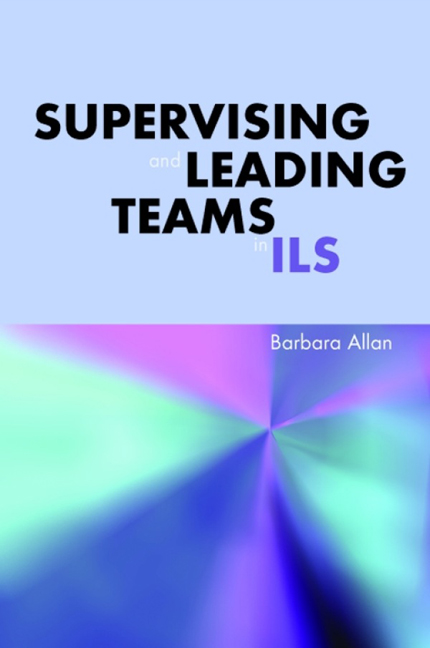Book contents
- Frontmatter
- Contents
- List of figures
- List of tables
- Acknowledgements
- Introduction
- 1 The role of team leaders in ILS
- 2 Leading and managing the team
- 3 Confident leadership and supervision
- 4 Motivation
- 5 Managing the work
- 6 Communication skills
- 7 Managing and leading complex teams
- 8 Human resource management
- 9 Workplace learning and training
- 10 Personal and professional development
- Further reading
- Index
8 - Human resource management
Published online by Cambridge University Press: 08 June 2018
- Frontmatter
- Contents
- List of figures
- List of tables
- Acknowledgements
- Introduction
- 1 The role of team leaders in ILS
- 2 Leading and managing the team
- 3 Confident leadership and supervision
- 4 Motivation
- 5 Managing the work
- 6 Communication skills
- 7 Managing and leading complex teams
- 8 Human resource management
- 9 Workplace learning and training
- 10 Personal and professional development
- Further reading
- Index
Summary
Introduction
As a team leader or supervisor you are likely to have contact with the human resources or personnel department when dealing with people issues. The purpose of this chapter is to provide an overview of the types of processes and activities that are involved in human resource management. This will help you to know and understand how the work of these specialists can support and help you in your work.
An important point to note is that if you are involved in a staff issue then it is always best to obtain expert advice from human resource specialists before attempting to tackle the problem. Employment legislation is constantly changing and developing, and this makes it imperative to ask for specialist assistance when dealing with staff issues.
The topics covered in this chapter are: human resource management, recruitment and selection, performance management and appraisal processes, disciplinary and grievance procedures, health and safety, managing absence, and equal opportunities and diversity. A useful and standard textbook on the subject is Torrington et al. (2005).
Human resource management
Large organizations will typically include a human resources department (previously called the personnel department) which is concerned with the strategic management of staff so that they support the goals and objectives of the organization. The human resources department is likely to take on the following responsibilities:
• administration of recruitment and selection
• servicing contracts of employment
• health and safety
• personnel policies and procedures
• supporting team leaders and managers in their dealings with their staff
• consultation with the recognized trade unions and other employee representatives
• workplace learning and development
• development and maintenance of personnel management systems
• provision of employment information, including statistics, for use within the organization and by related outside bodies
• presenting the organization's personnel policies and views in appropriate forums outside the organization.
Smaller organizations may employ one or two human resources officers and their function may be more narrowly focused on recruitment and selection, industrial relations, employment policies and practices, and health and safety.
- Type
- Chapter
- Information
- Supervising and Leading Teams in ILS , pp. 137 - 156Publisher: FacetPrint publication year: 2006

